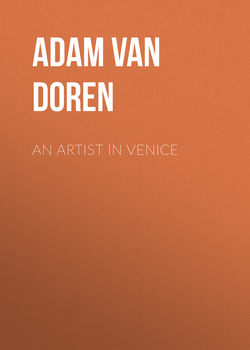Читать книгу An Artist in Venice - Adam Van Doren - Страница 8
На сайте Литреса книга снята с продажи.
ОглавлениеA WORLD AWAY
If you read a lot, nothing is as great as you’ve imagined. Venice is – Venice is better.
– Fran Lebowitz1
The winter of 1986 was barren and cheerless. Gray clouds scudded overhead, overshadowing the Columbia University campus like squat, menacing gulls. Students were holed up in dorms, huddled next to radiators. Finals loomed. Claustrophobia pressed in. I was trapped.
That December, wandering the depths of the architecture school, numb from a recent all-night charette study session, I noticed a brochure in the library announcing a summer program in Venice. The seductive cover showed a glossy photograph of the Salute church on the Grand Canal. All inquiries to be made to Prof. Luigi Butera. References necessary. I read the fine print. Applicants to be selected based on an aptitude for drawing. Space is limited. Despite the prerequisites, I thought my chances were good. Drawing was something I’d done for years, and Venice was a city I knew well. I jotted down the number for Professor Butera – suddenly the most significant person in my life – and determined that a summer abroad would be the perfect escape. But before I could seriously contemplate absconding to Europe, I had to satisfy my more immediate coursework: I needed to pass my semester review, which was only hours away.
Venice still lingered on my mind when I arrived at the design studio after lunch. Most of my fellow students were already there. They looked catatonic; some hadn’t slept in days. The professors were silent as I nervously pinned up my elevations, rendered in pencil and watercolor. They deliberated for what seemed an eternity. When they finally spoke, I heard the words “painterly” and “inspired” – no faint praise from an architecture jury. That afternoon I scrounged around for Professor Butera’s address and submitted my application. The sky seemed suddenly brighter, and I could breathe again. Elated and relieved, I was already sipping espresso in Piazza San Marco.
Lying awake in my dorm that evening, I pondered the possibilities. I thought of the expatriates who once lived there – Whistler, Stravinsky, Pound, Sargent, Browning, James, Byron, Brodsky – cultural luminaries in music, literature, and painting. The list was long. I felt presumptuous comparing my unfledged aptitudes to theirs. Unable to fall asleep, I got out of bed and stared out my window. I envisioned for a moment that the quadrangle below, outside Butler Library, was Piazza San Marco, and wondered if Venice would lead to anything significant – or if I was just being self-indulgent. Shouldn’t I be looking for a job? My drawings for that day’s presentation still lay sprawled on the floor. I looked at them again closely. In truth, I derived my greatest satisfaction from their use of watercolor – greater than any actual architectural problem I’d solved. I cared less about the requisite number of emergency exits and more about the quality of my rendering: the choice of colors, the shade and shadow. My years of art classes seemed finally to have paid off. Starting to droop, I closed my eyes and turned in.
Six months later I landed at Venice’s Marco Polo airport, accepted into the program. Boarding the vaporetto for my hotel, I started to plan my itinerary: the Palazzo Ca’ Dario, with its colorful Renaissance façade; the Frari Church, which has a famous painting by Titian; and Campo Giovanni e Paolo, known for its equestrian statue of Bartolomeo Colleoni. My fingers itched; I couldn’t wait to start sketching. But where to begin? It hardly mattered. In time, it would all make sense: I had decided to become a painter, not an architect – and Venice was responsible.
San Giorgio, 2009, by Susan Ennis
Palazzi, 2009. Collection of Mary Burnham
“Like an unfurled Chinese scroll, the façades stretch end-to-end.”
